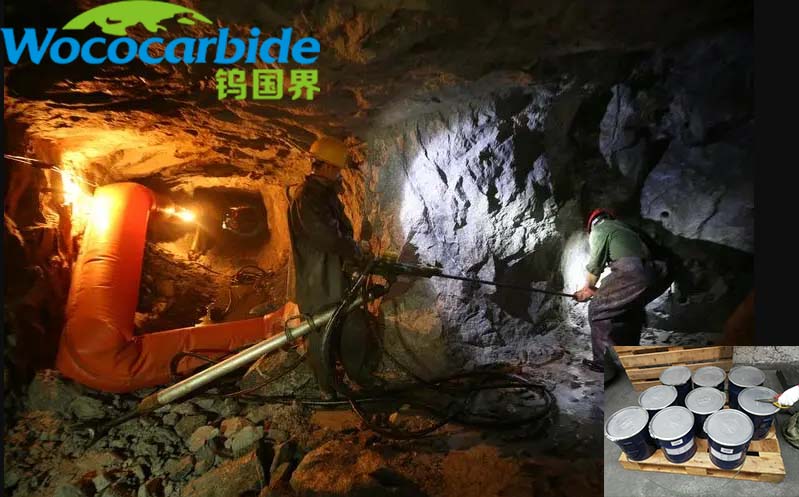

current position:Information and data>Four major processes of thermal spraying process
1. Surface pretreatment

In order to make the coating and the base material combine well, the surface of the base must be smooth and rough. There are many methods of surface purification and roughening. The selected method should be based on the design requirements, shape, thickness of the coating and the base material. The original conditions of the surface and construction conditions .
The purpose of purification treatment is to remove all dirt on the surface of the workpiece, such as scale, oil, paint and other dirt. The key is to remove the oil and seepage on the surface of the workpiece. The oil purification methods include solvent cleaning, steam cleaning, alkali cleaning and heating degreasing.
The purpose of the roughening process is to increase the contact area between the coating and the substrate, increase the mechanical engagement force between the coating and the substrate, and activate the machined surface to improve the bonding strength of the coating and the substrate. At the same time, the roughening of the substrate surface also changes the coating. The residual stress distribution of the layer, it would be beneficial to improve the bond strength of the coating.
Roughening treatment methods include sandblasting, mechanical processing (such as threading, knurling), electric brushing, etc. Among them, sandblasting is the most commonly used roughening treatment method. The commonly used sandblasting media are alumina, silicon carbide and chilled cast iron sandblasting , The type and particle size of sandblasting medium, the size of sandblasting wind pressure and other conditions must be reasonably selected according to the hardness of the workpiece material, the shape and size of the workpiece. For various metal substrates, the recommended sand size is about 16-60 grit and coarse grit for hardware. And the sand blasting pressure for heavy parts is 0.5-0.7mpa. It is especially worth noting that the compressed air used for sand blasting must be free of water and oil, otherwise it will seriously affect the quality of the coating. The surface roughness before spraying is sufficient to meet most metal materials. As the surface roughness increases, the bonding strength of the coating to the substrate increases, but when the surface roughness exceeds 10 μm mRa, the bonding strength of the coating decreases.
For some coating materials that are poorly combined with the substrate, a transition layer should also be sprayed on materials that combine well with the substrate, which is called the bonding bottom layer. It is often used to combine the bottom materials Mo, NiAl, NiCr and aluminum bronze. The thickness of the bonding bottom layer is generally 0.08-0.18 microns.
2. Warm up
The purpose of preheating is to eliminate moisture and moisture on the surface of the workpiece, increase the interface temperature when the sprayed particles are in contact with the workpiece, thereby improving the bonding strength of the coating and the substrate and reducing the cracking of the coating caused by the stress caused by the thermal expansion difference between the substrate and the coating material. The preheating temperature depends on the size, shape and material of the workpiece, as well as the thermal expansion coefficient of the substrate and coating materials. Under normal circumstances, the preheating temperature is controlled between 60-120 °C.
3. Spray
The spray method depends on the selected spray material, the working conditions of the workpiece and the quality of the coating. For example, if it is a ceramic coating, it is best to choose plasma spraying; if it is a carbide cermet coating, it is best to use high-speed flame spraying; if spraying plastics, only flame spraying can be used; if you want to spray a large area of outdoor anti-corrosion engineering, then Not a flexible and effective arc spray or flame spray wire. In conclusion, the choice of spraying methods is often varied, but there is always one method that is best suited for a particular application. The pretreated workpiece should be sprayed in the shortest possible time. The spraying parameters should be determined according to the coating material, the performance of the spray gun and the specific conditions of the workpiece. The optimized spraying conditions can improve the spraying efficiency and obtain a high-quality coating with high density and high bonding strength. .
4. Post-coating treatment
The coating produced by spraying sometimes cannot be used directly, and must undergo a series of post-treatments. In order to prevent the corrosion medium from corroding the substrate through the pores of the coating, the coating must be sealed. There are many materials used as sealants, such as paraffin, cycloaliphatic, silicone and other organic materials and inorganic materials such as oxides. How to choose a suitable sealant should be considered according to various factors such as the working medium, environment, temperature and cost of the workpiece. .
For high stress under impact load or wear artifacts, in order to improve the bonding strength of the coating, the coating is sprayed and remelted (such as flame remelting, induction remelting, laser remelting, hot isostatic pressing, etc.) Porous, combined with the substrate, only the film-forming density of the mechanical coating is the base material, which is a metallurgical combination of dimensional accuracy requirements. The mechanical processing of the coating is because the spray coating has different characteristics from general metal and ceramic materials, such as coating. There are micropores, which is not conducive to heat dissipation; the coating itself has low strength and cannot withstand large cutting forces; there are many hard particles in the coating, and the tool wears quickly, so the formation of the sprayed layer is different from the general material, which is difficult to process. , It is necessary to choose a reasonable processing method and corresponding process parameters to ensure the smooth processing of the spray coating and ensure the required dimensional accuracy.
Hot information

